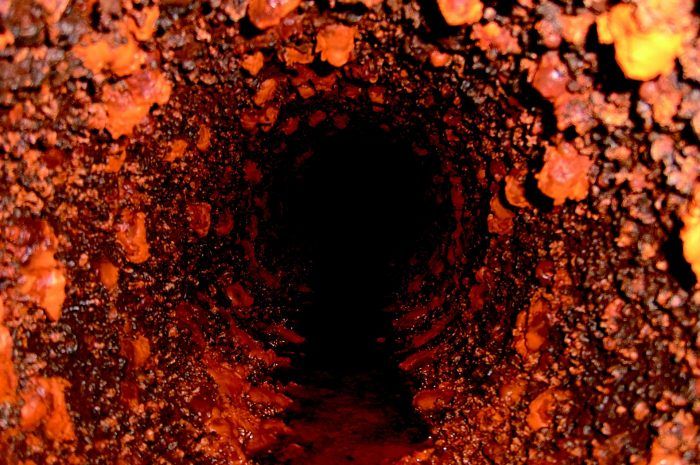Rusting Galvanized Water Lines
If steel water pipes are clogged with rust, is replacement the only option?

We have an older house with galvanized steel water pipes and they are becoming clogged with rust. The plumber told us the only way to correct the problem is to replace the pipes. Do we have any other options, such as somehow flushing the lines with an acid?
—BILL DALTON via email
Rhode Island plumber Tom Cardillo responds: I am all too familiar with your galvanized pipe problem. Like your plumber, I will also recommend you replace your pipes, and I’m going to tell you why. First off, I am assuming you are experiencing issues like little or no water flow at your fixtures, cloudy or rusty water when you first turn the water on, or maybe your faucet aerators are constantly clogging up. If so, I’m not surprised—these are all common problems with galvanized pipes. On a countless number of occasions, I have seen galvanized pipes that have rusted so much that a passage the size of a BB or less is all that’s left for water to flow through. If you think about it, the average age of galvanized water pipes is 85 to 100 years old, so it took some time to get like this.
I myself have never tried to flush out old pipes, and I would go so far as to strongly advise against it. Disturbing the rust buildup at this point would be counterproductive. A weep hole that may be sealed by rust buildup might become active again, and the pipe-wall thickness may be dangerously thin under the protective coating of muddy rust. And let’s not forget that the threaded pipe ends are originally thinner than the pipe body when installed, so by now there could be very little solid metal left at all. All that said, I believe 90 years of pipe wear and tear is irreversible, and total replacement of your domestic water piping is your only solution.
The three common pipe materials for residential water are copper, PEX (cross-linked polyethylene) and CPVC/PVC. From a plumber’s standpoint, I would choose PEX tubing for your project. In an older house, you may encounter obstacles that would be easier to deal with using PEX, which is flexible and generally requires fewer fittings and very little to no soldering. You may need to snake the piping up a wall or between floor joists, and encounter areas that are too tight or too dry to solder copper fittings properly.
Another major factor is water quality— PEX tubing is much more tolerant of harsh water conditions than copper. It’s also less expensive and it installs much more quickly. Now, don’t get me wrong—I’m not anti-copper. I think a neat copper job is something to be proud of, and there is absolutely nothing wrong with using it. Same goes for CPVC/PVC. But in your case, I think PEX is the best choice to get you flowing again. Good luck.
From FineHomebuilding #288





